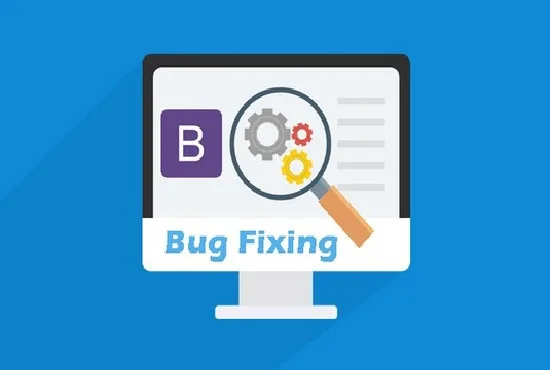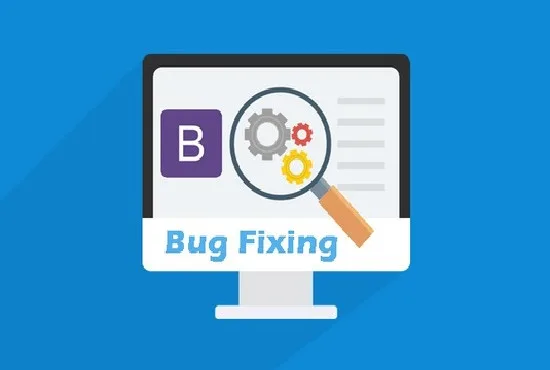Bug Fixing Tools: Streamlining Software Development and Improving Quality
In the fast-paced world of software development, bugs are an inevitable part of the process. Whether it’s a small glitch in the user interface or a critical error affecting system performance, bugs can impact both the user experience and the functionality of the application. However, with the right tools and strategies, development teams can efficiently identify, prioritize, and resolve bugs to ensure that their software meets the highest standards of quality.
Bug fixing tools are essential for developers, testers, and quality assurance teams, enabling them to streamline the bug detection and resolution process. These tools provide a variety of features for tracking, debugging, and resolving issues quickly, ensuring that applications run smoothly before being released to end-users.
In this article, we will explore the importance of bug fixing tools, their key features, and some of the best bug fixing tools available today.
What Are Bug Fixing Tools?
Bug fixing tools (or bug tracking tools) are software applications designed to help software teams detect, track, and resolve bugs or issues in a system. These tools provide a structured way to log bugs, monitor their status, and assign tasks to developers or teams responsible for fixing the issues.
Bug fixing tools often integrate with other development tools and workflows, such as version control systems (VCS), integrated development environments (IDEs), and continuous integration/continuous deployment (CI/CD) pipelines. The goal is to ensure that bugs are detected early, prioritized according to their severity, and resolved efficiently.
Types of Bug Fixing Tools
- Bug Tracking Tools: These tools help track and manage bugs throughout the software development lifecycle. They allow developers and testers to log, prioritize, assign, and resolve issues efficiently.
- Debugging Tools: These are specialized tools used to identify and analyze bugs in the source code. They provide insights into the code execution process, helping developers pinpoint the root cause of errors.
- Automated Testing Tools: Automated testing tools can detect certain types of bugs by running predefined tests on the software. They can also help ensure that previously fixed bugs do not reappear, preventing regressions.
- Code Review Tools: These tools assist in the process of reviewing the code before it’s committed or merged. While primarily focused on quality assurance, they also help in identifying potential bugs early in the development process.
- Performance Monitoring Tools: These tools track system performance, detecting issues such as memory leaks, slow load times, or high CPU usage, which can often be the result of bugs.

Importance of Bug Fixing Tools
1. Improved Code Quality
Bug fixing tools ensure that issues are detected early in the development process, making it easier to correct them before they affect the functionality of the software. By using these tools, developers can maintain high code quality and reduce the number of bugs that make it to production.
2. Faster Resolution of Issues
Bug fixing tools allow teams to prioritize issues based on severity and impact. This ensures that critical bugs are fixed first, preventing delays in the project timeline. In addition, these tools allow for better communication between developers, testers, and other stakeholders, speeding up the resolution process.
3. Better Collaboration
Bug fixing tools foster collaboration between development, testing, and quality assurance teams. They provide a central place to track and discuss bugs, assign tasks, and monitor progress. This shared visibility improves coordination and helps teams work more efficiently.
4. Easier Regression Testing
By keeping track of bugs and their fixes, these tools help ensure that previously fixed issues do not reoccur in later versions of the software. Bug fixing tools can be integrated with automated testing tools to make regression testing easier and more efficient.
5. Improved User Experience
By addressing bugs quickly and efficiently, software teams can ensure that users experience fewer issues, leading to higher customer satisfaction. A bug-free application not only functions better but also enhances the brand’s reputation.
Key Features of Bug Fixing Tools
When selecting a bug fixing tool, it is important to consider the features that can best support your development and testing workflows. Key features of bug fixing tools include:
1. Bug Tracking and Logging
- Allows developers and testers to log and track issues efficiently, including bug descriptions, severity levels, and steps to reproduce.
- Supports categorization and tagging of bugs for better organization.
- Provides search and filtering capabilities to locate specific bugs quickly.
2. Prioritization and Workflow Management
- Helps teams prioritize bugs based on severity, impact, and project deadlines.
- Supports custom workflows for bug resolution, such as assigning bugs to specific team members or setting deadlines.
3. Collaboration and Communication
- Includes features like comments, notifications, and attachments, enabling team members to collaborate and share insights on bugs.
- Provides email or in-app notifications to keep stakeholders informed of progress or new bugs.
4. Integration with Other Tools
- Integrates with version control systems, issue tracking tools, IDEs, CI/CD pipelines, and automated testing frameworks for a more seamless workflow.
- Allows bug fixes to be automatically tied to code commits, pull requests, or test results.
5. Reporting and Analytics
- Generates detailed reports on bug status, resolution times, and trends over time.
- Allows teams to monitor the quality of the software and identify recurring issues or areas for improvement.
6. Version Control Integration
- Automatically links bugs with commits or pull requests in version control systems (e.g., GitHub, GitLab, Bitbucket).
- Helps ensure that bug fixes are correctly documented and associated with the right code changes.
7. Automation and Regression Testing
- Automates repetitive testing tasks to detect bugs early and prevent regressions.
- Supports the execution of predefined test cases to ensure the software behaves as expected after bug fixes.
Popular Bug Fixing Tools
There are a wide variety of bug fixing tools available for different development environments and project needs. Here are some of the most popular bug fixing tools used by developers today:
1. Jira
Jira, developed by Atlassian, is one of the most widely used issue and project tracking tools. It is particularly well-suited for agile development teams, offering extensive customization options for workflows, priorities, and task management.
- Key Features:
- Bug tracking, issue logging, and workflow management.
- Integration with popular version control systems like Git, Bitbucket, and GitHub.
- Customizable dashboards, reporting, and analytics.
- Support for agile methodologies like Scrum and Kanban.
- Integration with CI/CD tools and automated testing frameworks.
- Best For: Agile teams looking for a comprehensive project management and bug tracking solution.
2. Bugzilla
Bugzilla is an open-source bug tracking system that is popular among developers for its simplicity and flexibility. It allows teams to manage bugs, track their status, and generate detailed reports.
- Key Features:
- Simple and customizable issue tracking.
- Support for advanced search and filtering.
- Customizable workflows and bug statuses.
- Integration with version control systems like Git and Subversion.
- Open-source and free to use.
- Best For: Teams looking for a free, open-source bug tracking tool with robust features.
3. Trello
Trello is a visual project management tool that can also be used for bug tracking. With its card-based interface, Trello allows teams to track bugs and organize tasks easily.
- Key Features:
- Visual boards, lists, and cards for tracking tasks and bugs.
- Labels, due dates, and checklists for prioritization and task management.
- Integration with other tools like Slack, GitHub, and Google Drive.
- Easy drag-and-drop functionality for task management.
- Simple user interface, making it ideal for smaller teams or non-technical users.
- Best For: Teams seeking a user-friendly, visual bug tracking tool for lightweight project management.
4. Sentry
Sentry is a real-time error tracking tool that helps developers monitor and fix bugs in production. It provides detailed context about errors, including stack traces, performance data, and user activity.
- Key Features:
- Real-time error monitoring and alerting.
- Detailed error reports, including stack traces and context.
- Support for a wide range of programming languages and frameworks.
- Integration with version control systems like GitHub and GitLab.
- Customizable notifications and workflows.
- Best For: Developers looking for real-time error tracking and bug resolution in production environments.
5. Raygun
Raygun offers error tracking and crash reporting for web and mobile applications. It provides detailed diagnostics, user session data, and error frequency trends to help teams fix bugs faster.
- Key Features:
- Real-time crash reporting for web and mobile apps.
- Diagnostic data including stack traces, browser information, and session data.
- Integration with issue tracking and collaboration tools like Jira and Slack.
- Performance monitoring to identify slow user experiences.
- Support for various programming languages and frameworks.
- Best For: Teams developing web or mobile apps looking for detailed crash reporting and performance insights.
6. GitHub Issues
GitHub Issues is a simple issue tracking tool integrated directly into GitHub repositories. It allows teams to track bugs, enhancements, and feature requests alongside their codebase.
- Key Features:
- Integration with GitHub repositories for easy bug tracking alongside code.
- Issue labels, assignees, and milestones for effective bug management.
- Integration with pull requests and commits.
- Lightweight and simple to use.
- Automation features for triaging issues.
- Best For: Teams using GitHub for version control and looking for basic bug tracking and issue management.
Conclusion
Bug fixing tools are an essential part of the software development lifecycle, enabling teams to track, manage, and resolve issues efficiently. Whether you’re using a comprehensive platform like Jira, a simple tool like Trello, or a real-time error tracking solution like Sentry, the right bug fixing tools can significantly improve your software quality and development speed.
By utilizing these tools, teams can ensure that bugs are identified and resolved promptly, minimizing the impact on users and maximizing the overall quality of the application. In today’s competitive software development environment, having an effective bug fixing process is key to delivering high-

